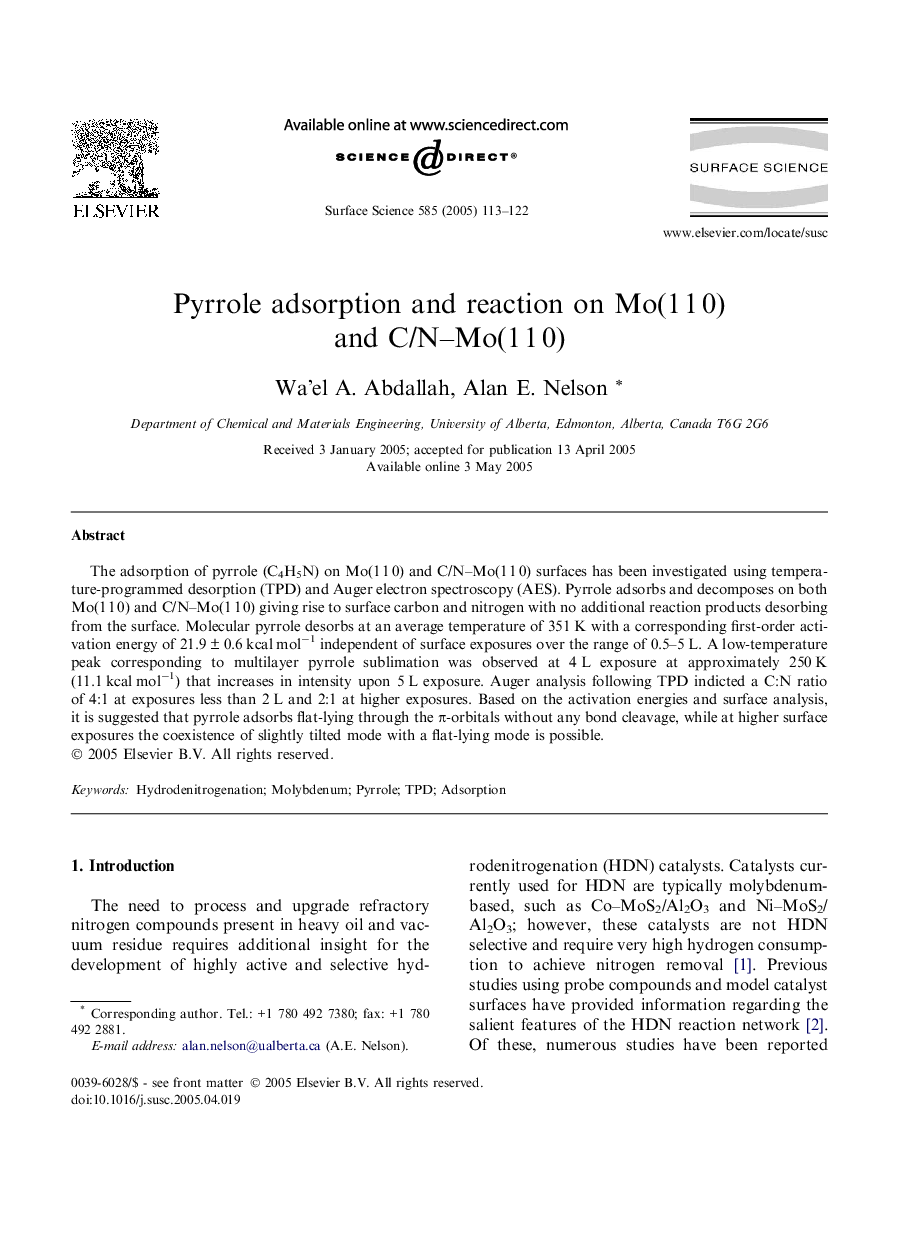| Article ID | Journal | Published Year | Pages | File Type |
|---|---|---|---|---|
| 9595193 | Surface Science | 2005 | 10 Pages |
Abstract
The adsorption of pyrrole (C4H5N) on Mo(1 1 0) and C/N-Mo(1 1 0) surfaces has been investigated using temperature-programmed desorption (TPD) and Auger electron spectroscopy (AES). Pyrrole adsorbs and decomposes on both Mo(1 1 0) and C/N-Mo(1 1 0) giving rise to surface carbon and nitrogen with no additional reaction products desorbing from the surface. Molecular pyrrole desorbs at an average temperature of 351 K with a corresponding first-order activation energy of 21.9 ± 0.6 kcal molâ1 independent of surface exposures over the range of 0.5-5 L. A low-temperature peak corresponding to multilayer pyrrole sublimation was observed at 4 L exposure at approximately 250 K (11.1 kcal molâ1) that increases in intensity upon 5 L exposure. Auger analysis following TPD indicted a C:N ratio of 4:1 at exposures less than 2 L and 2:1 at higher exposures. Based on the activation energies and surface analysis, it is suggested that pyrrole adsorbs flat-lying through the Ï-orbitals without any bond cleavage, while at higher surface exposures the coexistence of slightly tilted mode with a flat-lying mode is possible.
Related Topics
Physical Sciences and Engineering
Chemistry
Physical and Theoretical Chemistry
Authors
Wa'el A. Abdallah, Alan E. Nelson,
